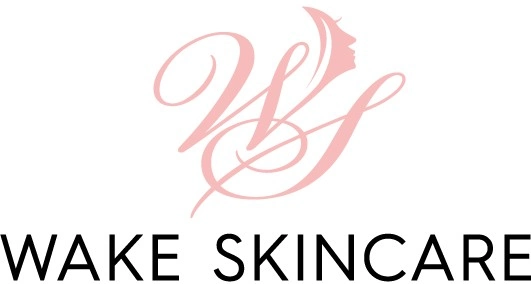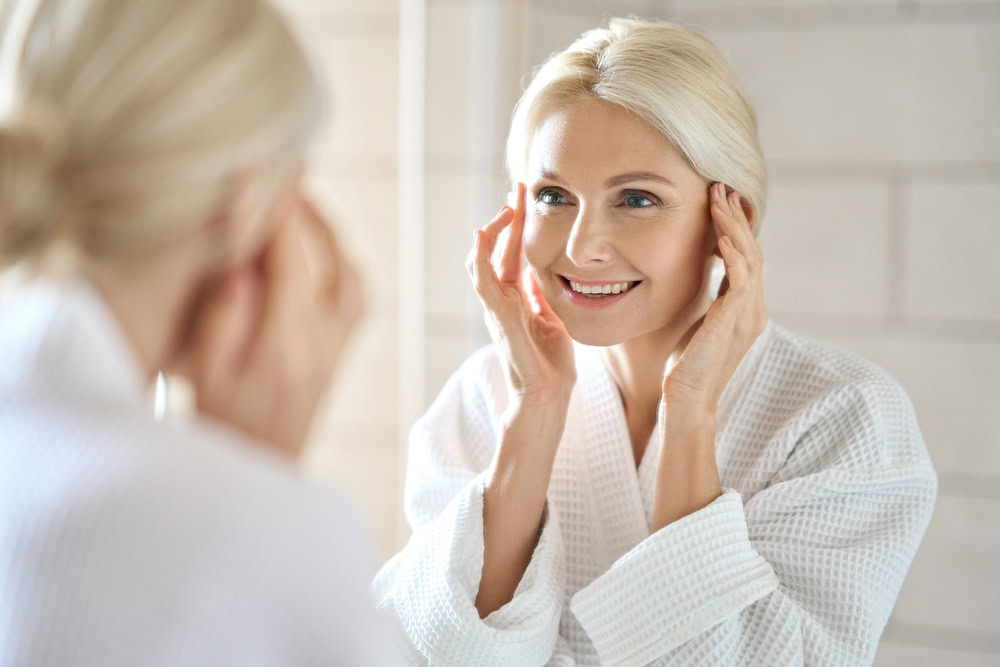Summary:
How Hormones Control Your Skin's Behavior
Your skin contains receptors that respond directly to hormonal fluctuations throughout your body. Think of hormones as chemical messengers that tell your skin how much oil to produce, how quickly to shed dead cells, and how to maintain its protective barrier.
Estrogen keeps your skin thick, hydrated, and elastic by supporting collagen production. When estrogen levels are high, your skin typically looks plump and clear. Androgens like testosterone stimulate your sebaceous glands to produce more oil, which can lead to clogged pores and breakouts when levels spike.
These hormonal shifts don’t just happen during obvious times like puberty. Your skin responds to monthly menstrual cycles, pregnancy, stress, and eventually menopause—each creating distinct patterns that require different management approaches.
Why Your Skin Changes During Your Monthly Cycle
During the first half of your menstrual cycle, rising estrogen levels often create clearer, more even-toned skin. You might notice your complexion looks particularly good around days 7-14 of your cycle. This is estrogen at work, supporting your skin’s natural moisture and thickness.
The second half brings different challenges. As progesterone increases after ovulation, your skin starts producing more oil. This is why many women experience breakouts in the week before their period—particularly around the jawline and chin where hormonal acne typically appears.
Understanding this pattern helps you adjust your skincare routine accordingly. During the first half of your cycle, you might focus on maintaining your skin’s healthy state with gentle treatments. In the second half, incorporating slightly more active ingredients or scheduling professional extractions can help manage the increased oil production and prevent clogged pores.
The key is recognizing these patterns aren’t random skin problems—they’re predictable responses to hormonal changes that you can work with rather than against. Professional estheticians can help you develop a cycle-synced approach that addresses these fluctuations before they become problematic.
Pregnancy and Postpartum Skin Changes Explained
Pregnancy brings dramatic hormonal shifts that can completely transform your skin. During the first trimester, many women experience worsening acne as hormone levels surge. This often improves as pregnancy progresses and estrogen levels stabilize at higher amounts.
Some women develop melasma—dark patches on the face often called “pregnancy mask”—due to increased melanin production triggered by hormonal changes. While this usually fades postpartum, professional treatments can help accelerate the process safely.
After giving birth, your hormone levels don’t simply return to pre-pregnancy normal. They fluctuate significantly as your body adjusts, especially if you’re breastfeeding. This can result in unexpected dryness, continued breakouts, or new sensitivity issues that weren’t present before pregnancy.
Many new mothers feel frustrated when their skin doesn’t bounce back as expected. The reality is that postpartum hormonal changes can take months or even years to fully stabilize. During this time, gentle professional treatments can help support your skin’s recovery without interfering with breastfeeding or adding stress to an already demanding period.
Working with an experienced esthetician during and after pregnancy ensures you’re using safe, effective treatments that account for your body’s changing needs. We can recommend modifications to your routine and provide treatments that support your skin’s health during this transformative time.
Managing Hormonal Skin Changes at Different Life Stages
Each life stage brings distinct hormonal patterns that require tailored skincare approaches. What worked in your twenties won’t necessarily address the changes you experience in your forties, and generic advice often fails because it doesn’t account for these differences.
Professional estheticians understand how to modify treatments based on where you are hormonally. We can identify whether your skin issues stem from fluctuating cycles, stress-induced cortisol spikes, or the gradual hormonal decline of perimenopause and menopause.
The most effective approach combines understanding your personal hormonal patterns with professional treatments designed for your specific needs. This might mean different products during different weeks of your cycle, or completely restructuring your routine as you transition through menopause.
Perimenopause and Menopause: When Everything Changes
Perimenopause can begin years before your periods actually stop, bringing unpredictable hormonal fluctuations that often show up first in your skin. You might notice adult acne appearing for the first time, or returning after decades of clear skin. This happens because declining estrogen levels can no longer effectively regulate androgens, leading to increased oil production and inflammation.
At the same time, decreasing estrogen means less collagen production, thinner skin, and reduced natural moisture. This creates the challenging combination of dealing with both breakouts and aging concerns simultaneously—something that requires a sophisticated treatment approach.
Many women find their previously effective skincare routines completely inadequate during this transition. Products that once controlled oiliness might now feel too harsh on increasingly sensitive skin. Moisturizers that provided adequate hydration may no longer be enough as your skin’s natural oil production changes.
Professional treatments during perimenopause and menopause focus on supporting your skin’s changing needs while addressing multiple concerns simultaneously. This might include gentle but effective acne treatments that don’t over-dry mature skin, or hydrating facials that incorporate anti-aging ingredients without causing irritation.
The key is working with someone who understands that menopausal skin isn’t just “aging skin”—it’s skin undergoing a specific hormonal transition that requires targeted expertise. Generic anti-aging treatments often miss the mark because they don’t address the unique combination of hormonal acne, increased sensitivity, and changing moisture needs that characterize this life stage.
Professional vs. DIY: Why Expert Care Makes the Difference
Social media is filled with hormonal acne “solutions” and DIY treatments that promise quick fixes. However, hormonal skin changes are complex and often require professional assessment to address effectively. What looks like simple acne might actually involve multiple factors including stress, diet, sleep patterns, and underlying hormonal imbalances.
Professional estheticians can perform detailed skin analyses that reveal patterns you might miss. We can distinguish between different types of breakouts, identify whether your skin barrier is compromised, and recommend treatments that address root causes rather than just surface symptoms.
Many women waste months or even years trying products that aren’t suited to their specific hormonal patterns. A professional consultation can save you time, money, and frustration by creating a targeted approach from the beginning. We can also safely perform extractions, chemical peels, and other treatments that aren’t advisable to attempt at home.
Professional treatments for hormonal skin changes often combine multiple modalities in a single session. This might include deep cleansing, targeted extractions, professional-grade peels, and customized masks that address your skin’s current needs while supporting long-term health.
The investment in professional care often pays for itself by preventing the trial-and-error approach that leads to purchasing multiple ineffective products. More importantly, it can prevent the scarring and hyperpigmentation that often result from improper at-home treatment of hormonal breakouts.
Creating Your Hormonal Skincare Management Plan
Managing hormonal skin changes successfully requires understanding your personal patterns and working with professionals who can adapt treatments as your needs evolve. The most effective approach combines consistent professional care with a home routine designed to support your skin between appointments.
Start by tracking your skin changes in relation to your cycle, stress levels, and life transitions. This information helps your esthetician identify patterns and predict when your skin might need extra support. Remember that hormonal skin changes are normal and manageable with the right expertise and approach.
If you’re ready to move beyond guessing games and generic solutions, Wake Skincare offers the personalized, professional approach that hormonal skin changes require. Our award-winning team understands the complex relationship between hormones and skin health, providing treatments that work with your body’s natural rhythms rather than against them.




